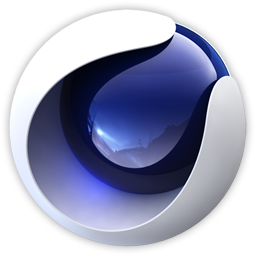
Rendering or image synthesis is the process of generating a photorealistic or non-photorealistic image from a 2D or 3D model by means of a computer program. The resulting image is referred to as the render. Multiple models can be defined in a scene file containing objects in a strictly defined language or data structure. The scene file contains geometry, viewpoint, texture, lighting, and shading information describing the virtual scene. The data contained in the scene file is then passed to a rendering program to be processed and output to a digital image or raster graphics image file. The term "rendering" is analogous to the concept of an artist's impression of a scene. The term "rendering" is also used to describe the process of calculating effects in a video editing program to produce the final video output.

Alias Systems Corporation, headquartered in Toronto, Ontario, Canada, was a software company that produced high-end 3D graphics software. Alias was eventually bought by Autodesk.
Autodesk, Inc. is an American multinational software corporation that makes software products and services for the architecture, engineering, construction, manufacturing, media, education, and entertainment industries. Autodesk is headquartered in San Rafael, California, and has offices worldwide. Its U.S. offices are located in the states of California, Oregon, Colorado, Texas, Michigan, New Hampshire and Massachusetts. Its Canada offices are located in the provinces of Ontario, Quebec, and Alberta.

Cinema 4D is a 3D software suite developed by the German company Maxon.

In scientific visualization and computer graphics, volume rendering is a set of techniques used to display a 2D projection of a 3D discretely sampled data set, typically a 3D scalar field.

Softimage, Co. was a company located in Montreal, Quebec, Canada that produced 3D animation software. A subsidiary of Microsoft in the 1990s, it was sold to Avid Technology, who would eventually sell the name and assets of Softimage's 3D-animation business to Autodesk.

Java 3D is a scene graph-based 3D application programming interface (API) for the Java platform. It runs on top of either OpenGL or Direct3D until version 1.6.0, which runs on top of Java OpenGL (JOGL). Since version 1.2, Java 3D has been developed under the Java Community Process. A Java 3D scene graph is a directed acyclic graph (DAG).

Quadro was Nvidia's brand for graphics cards intended for use in workstations running professional computer-aided design (CAD), computer-generated imagery (CGI), digital content creation (DCC) applications, scientific calculations and machine learning.
The Advanced Visualizer (TAV), a 3D graphics software package, was the flagship product of Wavefront Technologies from the 1980s until the 1990s.
SpeedTree is a group of vegetation programming and modeling software products developed and sold by Interactive Data Visualization, Inc. (IDV) that generates virtual foliage for animations, architecture and in real time for video games and demanding real time simulations.
Kurt Akeley is an American computer graphics engineer.

Ray-tracing hardware is special-purpose computer hardware designed for accelerating ray tracing calculations.
Messiah is a 3D animation and rendering application developed by pmG Worldwide. It runs on the Win32 and Win64 platforms. It is marketed to run on Mac OS X and Linux via Wine. Messiah's fourth version, messiah:studio was released April 2009 and version 5.5b as messiah:animate was released November 2006. messiahStudio6 was released in April 2013. Messiah seems no longer maintained since 2013 (abandoned).
Lightwork Design Ltd. is a computer software company specialising in 3D Rendering software. Its headquarters are in Sheffield, United Kingdom.
Arnold is a computer program for rendering three-dimensional, computer-generated scenes using unbiased, physically-based, Monte Carlo path tracing techniques. Created in Spain by Marcos Fajardo and later co-developed by his company Solid Angle SL and Sony Pictures Imageworks, Arnold is one of the most widely used photorealistic rendering systems in computer graphics worldwide in 2021, specially in animation and VFX for film and TV. Notable feature films that have used Arnold include Monster House, Cloudy with a Chance of Meatballs, Alice in Wonderland, Thor, Captain America, X-Men: First Class, The Avengers, Space Pirate Captain Harlock, Elysium, Pacific Rim, Gravity, Guardians of the Galaxy, Star Wars: The Force Awakens, Arrival and Blade Runner 2049. Notable television series include Game of Thrones, Westworld, Trollhunters, LOVE DEATH + ROBOTS and The Mandalorian.
Vulkan is a low-overhead, cross-platform API, open standard for 3D graphics and computing. Vulkan targets high-performance real-time 3D graphics applications, such as video games and interactive media. Vulkan is intended to offer higher performance and more efficient CPU and GPU usage compared to older OpenGL and Direct3D 11 APIs. It provides a considerably lower-level API for the application than the older APIs, making Vulkan comparable to Apple's Metal API and Microsoft's Direct3D 12. In addition to its lower CPU usage, Vulkan is designed to allow developers to better distribute work among multiple CPU cores.

Gary Yost is an American filmmaker and software designer, best known for leading the team that created Autodesk 3ds Max.
Caustic Graphics was a computer graphics and fabless semiconductor company that developed technologies to bring real-time ray-traced computer graphics to the mass market.

Nvidia GeForce RTX is a high-end professional visual computing platform created by Nvidia, primarily used for designing complex large-scale models in architecture and product design, scientific visualization, energy exploration, games, and film and video production. Nvidia RTX enables real-time ray tracing. Historically, ray tracing had been reserved to non-real time applications, with video games having to rely on direct lighting and precalculated indirect contribution for their rendering. RTX facilitates a new development in computer graphics of generating interactive images that react to lighting, shadows and reflections. RTX runs on Nvidia Volta-, Turing- and Ampere-based GPUs, specifically utilizing the Tensor cores on the architectures for ray-tracing acceleration.









